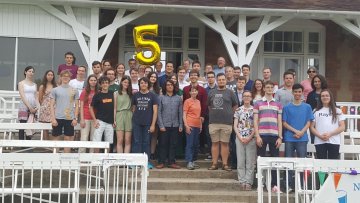14:00
Quotient-Space Boundary Element Methods for Scattering at Multi-Screens
Abstract
Boundary integral equations (BIEs) are well established for solving scattering at bounded infinitely thin objects, so-called screens, which are modelled as “open surfaces” in 3D and as “open curves” in 2D. Moreover, the unknowns of these BIEs are the jumps of traces across $\Gamma$. Things change considerably when considering scattering at multi-screens, which are arbitrary arrangements of thin panels that may not be even locally orientable because of junction points (2D) or junction lines (3D). Indeed, the notion of jumps of traces is no longer meaningful at these junctions. This issue can be solved by switching to a quotient space perspective of traces, as done in recent work by Claeys and Hiptmair. In this talk, we present the extension of the quotient-space approach to the Galerkin boundary element (BE) discretization of first-kind BIEs. Unlike previous approaches, the new quotient-space BEM relies on minimal geometry information and does not require any special treatment at junctions. Moreover, it allows for a rigorous numerical analysis.


